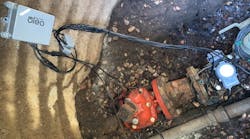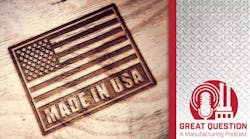The impact of COVID-19 on water utilities is as significant as any other sector. The immediate response has been to ensure the safety of our workforce and maintaining a supply of clean, safe, and affordable drinking water.
The long-term impact on our utilities is becoming clearer and will be far-reaching.
We are beginning to understand the financial stress utilities will experience in the coming months, driven by economic disruption and historic unemployment. In many cities, the discussion of layoffs, budget reductions and historic rate increases have already begun.
Some relief may come from federal stimulus to invest in infrastructure or offset declines in utility income. But utilities will need to focus on capturing every dollar of revenue available to minimize the impact of COVID-19 on employees, ratepayers, and suppliers.
Most utility income sources will decline due to COVID-19
Our utilities fund themselves through a variety of revenue streams. The primary revenue source for most utilities comes from charges to customers for water and wastewater services. Water is delivered to utilities through extensive networks of distribution piping, and the volume of water delivered to a customer is measured, in most cases, by water meters. In many instances, bills for wastewater service are generated from the reading of these water meters based on the concept of “water in, water out.”
COVID-19 is directly affecting the demand for water. For example, residential and multifamily housing units are consuming more water as people increasingly work for home. In comparison, commercial businesses like restaurants use less water due to closures or restrictions on the number of customers they can serve. Overall, the consumption of water is expected to decline significantly due to declining economic output driven by COVID-19.
According to the National Association of Clean Water Agencies, a trade group for wastewater utilities, its members could collectively lose $16.8 billion in revenue. The American Water Works Association estimates a $13.9 billion aggregate financial impact to the water industry. A large US water utility is currently contemplating a $50 million reduction in revenue in the last five months of its fiscal year and greater reduction in the next fiscal year.
Other revenue streams include sales taxes, income taxes, capital-gains taxes and property taxes. Most, if not all, these sources will decline due to COVID-19. For example:
-
Sales tax declines driven by the closure of businesses due to quarantine-like measures
-
Significant reductions in income tax on the heels of scaling unemployment and reduced wages going forward
-
Lower capital-gains tax revenues from equity transactions after significant stock market declines
-
Property taxes are likely to decline following an economic reset, thereby undercutting municipal revenues over time
Large portions of the American economy have been shut down for weeks, and the loss of jobs and business is already staggering. According to theUS Department of Labor, total non-farm employment in April dropped by 20.5 million, and the unemployment rate rose from historic lows of less than 4% to an unprecedented high of 14.7%.
Utilities face new constraints in a post-COVID-19 world
Most people view water as an essential need. Turning off water service due to non-payment has always been a last resort for most cities and utilities. COVID-19 has increased this perceived need because water is essential for handwashing and hygiene, which, in turn, is critical to reducing the spread of COVID-19. Hundreds of utilities have now said they will not turn off water to customers who are late paying their bills during the COVID-19 emergency.
Smart sensors on edge devices enable unprecedented insights on remote assets.
The governors of California, New Hampshire, New Jersey and Ohio were among those who ordered all public water utilities in their states to suspend water shutoffs during the emergency. The Wisconsin Public Services Commission did the same in that state. The City of Atlanta is allowing customers to defer payments during the pandemic.
Not all the country’s roughly 50,000 public water systems share the same vulnerabilities, analysts say. But all will be affected in some way by changes in water use patterns and prohibitions on turning off water service. They will have customers who are suddenly jobless and cannot pay their bills on time. Late payments could increase. With businesses closing, commercial and industrial water sales, which fund a significant portion of most utility budgets, will decline. This is especially true for utilities that rely on a few large industries for the bulk of their revenue.
Most utilities finance capital-improvement projects using a variety of debt instruments. Debt-service payments are a fixed expense placing additional stress on utility income statements. In some cases, utility debt service payments can represent 50% or more of a utility’s total expenses. Debt payments will have to be made, further constraining available cash desperately needed to sustain operations.
In general, our water utilities have a significant portion of their budget allocated to fixed expenses, which are difficult to reduce over the short term. Even a small reduction in revenue has a substantial impact on operations and workforce because there aren’t many expenses that can be cut in the short term.
Utilities have few options to offset declining revenues
Utilities have limited options to offset declining revenues due to COVID-19. These options include:
-
Workforce reduction
-
Cut operational and maintenance expenses
-
Stop or reduce short-term capital improvement projects
-
Increase rates
-
Accurately measure and bill for water delivered
Unfortunately, utilities must contemplate a resolution to the revenue gap caused by COVID-19 and attempt to predict when or if consumption patterns will return to normal. In the short-term, utilities are focused on cutting costs and potential budget reductions. With personnel costs being a large portion of the operating budget, utility leaders face cutting vacant positions, possible furloughs, and a reduction in force. A 5-10% budget reduction is likely needed to offset the revenue shortfall for 2020 for many utilities.
Water utilities across the country are challenged by aging infrastructure.The US Environmental Protection Agency (EPA) estimates over $743 Billion in needed for water and wastewater infrastructure. Reduction of capital-improvement projects, in many cases, may provide short-term cash flow relief. In the long term, outdated infrastructure will continue to increase the burden on already stretched maintenance staff and utility budgets.
Many utilities are contemplating rate increases, although the appetite for rate increases in this time of severe economic stress has yet to be tested. Josh Schimmel, executive director of Springfield Water and Sewer Commission, told Circle of Blue that his utility, which serves 250,000 people in western Massachusetts, could see its largest rate increase ever. Springfield Water and Sewer Commission needs to make up for an expected 5-6% drop in revenue this fiscal year and next. Unfortunately, rate increases will have a disproportionate impact on the neediest of our society especially in severe economic stress.
Focusing on accurately measuring the water delivered to customers can provide additional revenue for utilities. Water delivered to customers is typically measured by water meters. Water meters can fail at any time, regardless of age or service volume. Additionally, water meters rarely fail to the benefit of the utility. Typically, for a standard portfolio of water meters, utilities can realize a 10% increase or more in revenue by quickly repairing or replacing inaccurate meters.
Smart water starts with smart revenue
The digitization of water provides a host of opportunities to improve employee safety, employee effectiveness, operational efficiency, CAPEX efficiency and revenue. Employee safety is essential and critical to proper utility operations. Revenue is the second-most important factor to drive exceptional utility operations for several reasons:
-
Revenue provides margin to utilities to cover expenses and investment
-
Consistent revenue enables utilities to meet budget
-
Predictable revenue contributes to lower utility rates and lower interest rates
Also, accurate measurements of water consumption ensure each water user pays their fair share. Accurate water-consumption measurements can have a significant impact on user behavior by providing a clear linkage between water usage and the amount paid for water.
In the past, the payback on solutions to improve the consistency and accuracy of meter revenue or the billing process have had long payback periods. It is not uncommon to see justifications for Automated Metering Infrastructure (AMI) and Automated Meter Reading (AMR) solutions with 5, 10 and even 15-year payback periods.
These legacy solutions did a fair job helping utilities understand usage patterns, identifying substantial changes in usages and generating customer bills efficiently. AMI/AMR did not tell utilities why consumption had changed. Understanding why water consumption has changed helps utilities determine what actions are needed to correct or adjust to the changes in revenue. Focusing on “why” enables utilities to deploy workforce, assets, and investment more effectively, resulting in increased returns. In addition to understanding why consumption has changed, utilities need to understand which assets generate the most income.
A small subset of meter assets in any utility, typically 1–10%, can represent up to 25–80% of a utility’s annual revenue. These high-value meters usually serve commercial, industrial and agricultural customers. Average revenue from a high-value meter is typically higher than $2,000 per month, with many exceeding ten thousand or even hundreds of thousands dollars per month. The failure of a few or even one of the very high-value metering assets can have a measurable impact on utility revenue. The operation of these metering assets has a direct effect on revenue consistency and predictability for any water utility.
Focusing and continuously monitoring the accuracy of high-value water meter assets can generate an increase in revenue of 5, 10 or even 20%. This revenue can be captured with minimal impact on utility operations and minimal impact on cash flow utilizing the latest edge processing technologies.
Before the explosion of Internet of Things technology over the past five years, there were no cost-effective options to continuously monitor high-value water meter accuracy. The development of computer chips that draw very low power and new low-power sensors has enabled the development of a solution to continuously monitor the accuracy of high value water meters.
Smart revenue focuses on the Why and the What
Utilities will have many difficult decisions to make over the coming months as they respond to the financial and human consequences of the COVID-19 pandemic. Expense control and reductions in the workforce, unfortunately, will be a focus due to the extreme impact of COVID-19 and constraints on city and utility finances.
Smart utilities will include revenue as part of any mitigation plan with a clear focus on why consumption has changed, and what meters generate the most revenue to drive reliable and repeatable action plans. Smart water strategies that focus on high-value water meters can deliver short-term revenue to offset the inevitable declines in income because of COVID-19. Stabilizing revenue and ensuring accurate billing to high-value customers provides the best way to minimize the impact of COVID-19, especially as mitigation to workforce reductions.
Contributed by Dave Mackie, CEO, and Andrew Kodis, vice president of business development, Olea Edge Analytics


